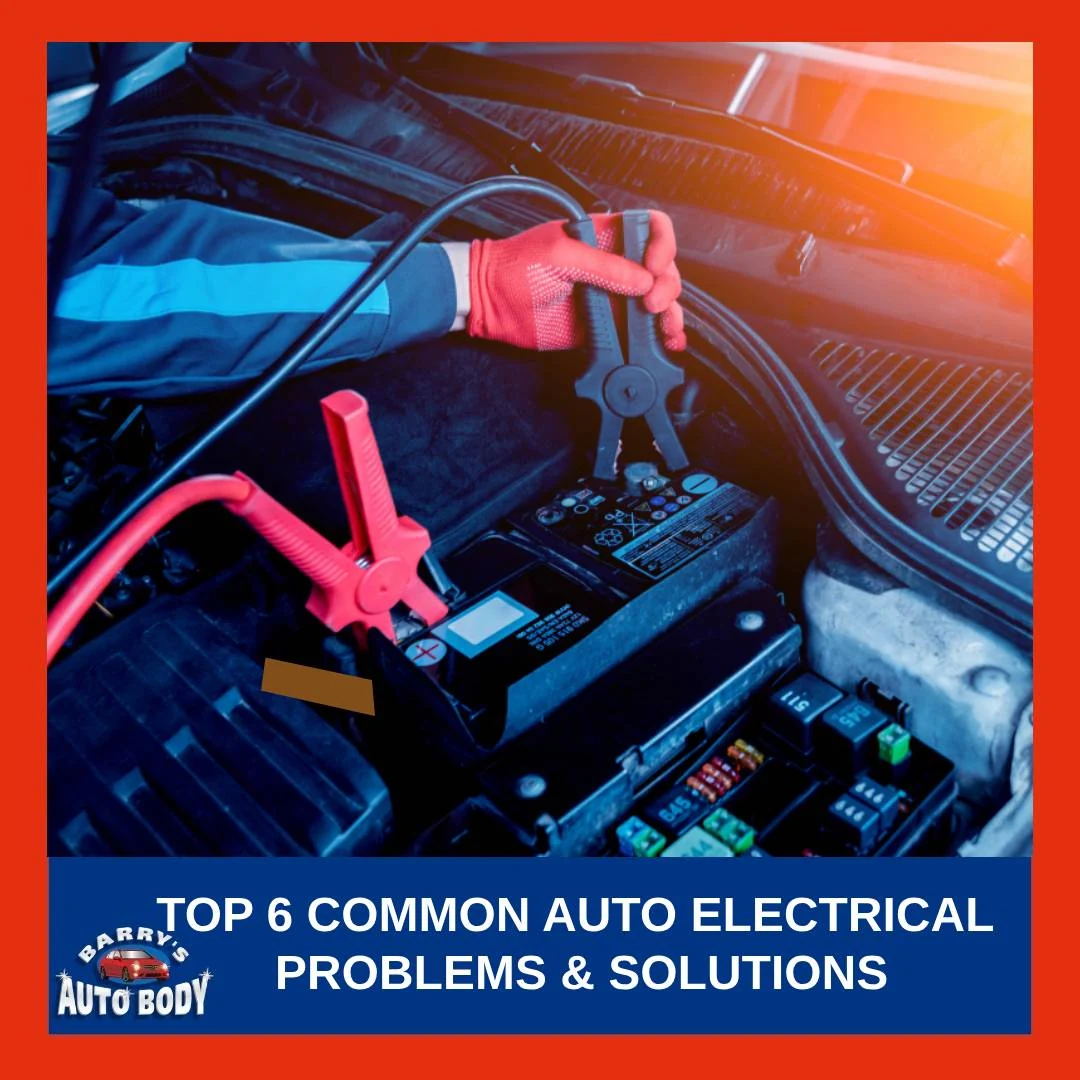The symphony of a well-functioning vehicle is a blend of mechanical and electrical components working harmoniously. The electrical system is pivotal in powering various components, ensuring a smooth and safe driving experience. This comprehensive guide will delve into the top 6 common auto electrical problems, unravel their symptoms, and provide practical solutions to keep you cruising without a hitch.
I. Battery Issues:
The battery, often considered the heartbeat of your car’s electrical system, stores, and supplies energy to start the engine and power electrical components.
Symptoms of a Failing Battery:
- Difficulty Starting the Engine: A slow crank or struggle to start may signify a weakening battery.
- Dimming Headlights: If your headlights appear dim or flicker, it could indicate insufficient power from the battery.
Solutions:
Testing and Replacing the Battery:
- Regularly test the battery using a multimeter to check voltage and overall health.
- Replace the battery if it’s old or not holding a charge, ensuring the replacement has the correct specifications for your vehicle.
Proper Battery Maintenance:
- Clean battery terminals regularly to prevent corrosion, ensuring a secure and efficient connection.
- Use a battery charger to maintain an adequate charge level, especially during inactivity.
II. Alternator Problems:
The alternator, responsible for charging the battery and powering electrical systems while the engine runs, is a critical component.
Signs of a Failing Alternator:
- Warning Light on the Dashboard: The appearance of a battery or alternator warning light signals potential issues.
- Strange Noises: Unusual sounds like grinding or whining may indicate alternator trouble.
Solutions:
Testing and Replacing the Alternator:
- Conduct a thorough charging system test to identify alternator issues.
- Replace a failing alternator promptly to prevent a dead battery and other electrical failures.
Belt Inspection and Replacement:
- Regularly inspect belts for wear and tension.
- Replace worn or damaged belts promptly to ensure proper alternator performance.
III. Faulty Starter Motor:
The starter motor, responsible for turning the engine over during ignition, is a crucial part of the starting process.
Indications of a Faulty Starter Motor:
- Clicking Noise: A clicking sound when turning the key is a common sign of a failing starter motor.
- Engine Not Cranking: If the engine refuses to crank, the starter motor might be the culprit.
Solutions:
Testing and Repairing or Replacing the Starter Motor:
- Use a voltage meter to test the starter motor’s performance.
- Repair or replace the starter motor if it shows signs of failure.
Ignition Switch Examination:
- Ensure the ignition switch functions correctly by checking for electrical continuity.
- Replace the ignition switch if it is faulty to prevent problems with the starter motor.
IV. Wiring Issues:
Properly functioning wiring is vital for the seamless operation of various electrical components in your vehicle.
Common Signs of Wiring Problems:
- Flickering Lights: Inconsistent lighting can be a symptom of wiring issues.
- Electrical Components Not Working: Malfunctions in various components, like power windows or the radio, can be attributed to faulty wiring.
Solutions:
Visual Inspection and Testing of Wires:
- Regularly inspect wiring harnesses for signs of wear, corrosion, or damage.
- Use a multimeter to test the continuity and voltage of wire
Repair or Replacement of Damaged Wiring:
- Address damaged wiring promptly by splicing or replacing sections as needed.
- Consider professional assistance for complex wiring issues.
V. Faulty Ignition System:
The ignition system, responsible for starting the combustion process in the engine, is crucial for overall engine performance.
Symptoms of Ignition System Problems:
- Difficulty Starting the Engine: An unreliable ignition system can lead to difficulty starting the engine.
- Stalling While Driving: The ignition system might be the culprit if your vehicle stalls unexpectedly.
Solutions:
Inspection and Replacement of Spark Plugs:
- Inspect spark plugs regularly for signs of wear and deposits.
- Replace spark plugs at recommended intervals to ensure optimal ignition.
Examination and Repair of the Ignition Coil:
- Test the ignition coil for proper functioning using an ignition coil tester.
- Replace the ignition coil if it shows signs of failure to maintain a reliable ignition system.
VI. Blown Fuses:
Fuses protect electrical systems by breaking the circuit during surges or short circuits.
Signs of Blown Fuses:
- Specific Electrical Component Failure: If a particular component stops working, it might be due to a blown fuse.
- No Power to Certain Systems: Lack of power to critical systems could indicate a blown fuse.
Solutions:
Identifying and Replacing Blown Fuses:
- Use the vehicle’s manual to identify the location and amperage of the blown fuse.
- Replace blown fuses with the correct amperage to prevent electrical system damage.
Investigation of the Root Cause:
- Determine why the fuse blew by checking for underlying issues like a short circuit or component malfunction.
- Address the root cause to prevent future occurrences.
In conclusion, understanding and addressing common auto electrical problems are essential for maintaining a reliable and efficient vehicle. Regular maintenance, timely diagnostics, and prompt action can save you from the inconvenience of unexpected breakdowns. By watching your car’s electrical system, you can confidently enjoy the open road, knowing that your vehicle’s electrical components are in top-notch condition. Remember, a well-maintained electrical system not only ensures a smoother driving experience but also contributes to the longevity of your vehicle. As you embark on your journey, empower yourself with the knowledge to troubleshoot and resolve common auto electrical issues, ensuring a safer and more enjoyable driving experience for miles to come.

